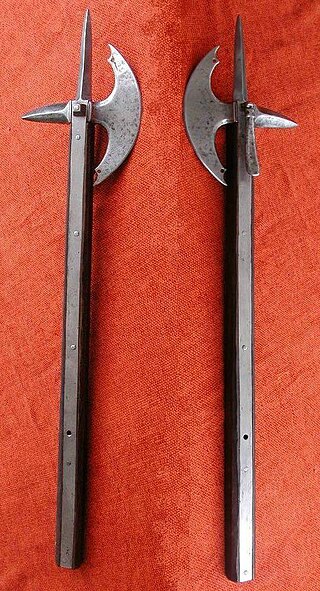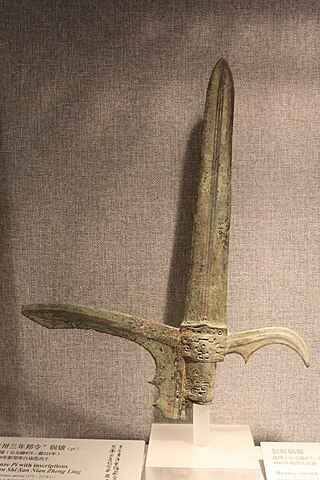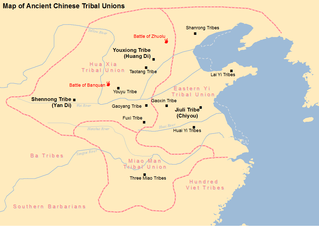
Chinese mythology is mythology that has been passed down in oral form or recorded in literature in the geographic area now known as Greater China. Chinese mythology includes many varied myths from regional and cultural traditions. Much of the mythology involves exciting stories full of fantastic people and beings, the use of magical powers, often taking place in an exotic mythological place or time. Like many mythologies, Chinese mythology has in the past been believed to be, at least in part, a factual recording of history. Along with Chinese folklore, Chinese mythology forms an important part of Chinese folk religion. Many stories regarding characters and events of the distant past have a double tradition: ones which present a more historicized or euhemerized version and ones which present a more mythological version.

The Yellow Emperor, also known as the Yellow Thearch or by his Chinese name Huangdi, is either an individual deity (shen) in Chinese religion, one of the legendary Chinese sovereigns and cultural heroes included among the mytho-historical Three Sovereigns and Five Emperors, or a part of the Five Regions' Highest Deities. Calculated by Jesuit missionaries, who based their work on various Chinese chronicles, and later accepted by the twentieth-century promoters of a universal calendar starting with the Yellow Emperor, Huangdi's traditional reign dates are 2697–2597 or 2698–2598 BC.

Chiyou (蚩尤) is a mythological being that appears in Chinese mythology.
In Irish mythology, Fragarach, known as "The Whisperer", "The Answerer", or "The Retaliator", was the sword of Nuada, the first high king. The sword was forged by the gods and was meant to be wielded only by those who posed above the stone of destiny which roared and the sword whispered in response.

A battle axe is an axe specifically designed for combat. Battle axes were specialized versions of utility axes. Many were suitable for use in one hand, while others were larger and were deployed two-handed.
Ou Yezi was a legendary master of sword-making in the Spring and Autumn period. According to Yuejueshu, he forged five treasured swords for Gan Jiang and King Zhao of Chu, named, respectively, Zhanlu (湛卢), Juque (巨阙), Shengxie (胜邪), Yuchang (鱼肠) and Chunjun (纯钧). He also made three swords for King Goujian of Yue, named Longyuan (龙渊), Tai’e (泰阿) and Gongbu (工布), Hailed as The Greatest Blacksmith.
Gan Jiang and Mo Ye were a swordsmith couple, discussed in the literature involving the Spring and Autumn period of Chinese history. Some aspects of this material may be considered historical; others are certainly mythological. A pair of swords was forged by and named after them.

The Yan Emperor or the Flame Emperor was a legendary ancient Chinese ruler in pre-dynastic times. Modern scholarship has identified the Sheep's Head Mountains just north of Baoji in Shaanxi Province as his homeland and territory.

The Green Dragon Crescent Blade is a legendary weapon wielded by the Chinese general Guan Yu in the 14th-century historical novel Romance of the Three Kingdoms. It is a guandao, a type of traditional Chinese weapon.

The ji was a Chinese polearm, sometimes translated into English as spear or halberd, though they are fundamentally different weapons. They were used in one form or another for over 3000 years, from at least as early as the Zhou dynasty, until the end of the Qing dynasty. They are still used for training purposes in many Chinese martial arts.

The hook sword, twin hooks, fu tao, hu tou gou or shuang gou is a Chinese weapon traditionally associated with northern styles of Chinese martial arts and Wushu weapons routines, but now often practiced by southern styles as well.

The Battle of Banquan is a battle in ancient Chinese history as recorded by Sima Qian's Records of the Grand Historian. It was fought by Huangdi, the Yellow Emperor, and Yandi, the Flame Emperor.

The Battle of Zhuolu was the second battle in the history of China as recorded in the Records of the Grand Historian, fought between the Yanhuang tribes led by the legendary Yellow Emperor and the Jiuli tribes led by Chiyou. The battle was fought in Zhuolu, near the present-day border of Hebei and Shanxi.
Historically, Chinese swords are classified into two types, the jian and the dao. A Jian is a straight, double-edged sword mainly used for stabbing, and has been commonly translated into the English language as a longsword; while a dao is a single-edged sword mainly used for cutting, and has been translated as a saber or a "knife".

Xingtian is a Chinese deity who fights against the Supreme Divinity, not giving up even after the event of his decapitation. Losing the fight for supremacy, he was beheaded and his head buried in Changyang Mountain. Nevertheless, headless, with a shield in one hand and a battle axe in the other, he continues the fight, using his nipples as eyes and his bellybutton as a mouth.

The Wǔfāng Shàngdì, or simply Wǔdì or Wǔshén are, in Chinese canonical texts and common Chinese religion, the fivefold manifestation of the supreme God of Heaven. This theology dates back at least to the Shang dynasty. Described as the "five changeable faces of Heaven", they represent Heaven's cosmic activity which shapes worlds as tán 壇, "altars", imitating its order which is visible in the starry vault, the north celestial pole and its spinning constellations. The Five Deities themselves represent these constellations. In accordance with the Three Powers they have a celestial, a terrestrial and a chthonic form. The Han Chinese identify themselves as the descendants of the Red and Yellow Deities.

Chìdì or Chìshén, also known as the Nándì or Nányuèdàdì, as a human was Shénnóng, who is also the same as Yándì, a function occupied by different gods and god-kings in mytho-history. Shennong is also one of the Three Patrons, specifically the patron of humanity, and the point of intersection of the Three Patrons and Huangdi.
















